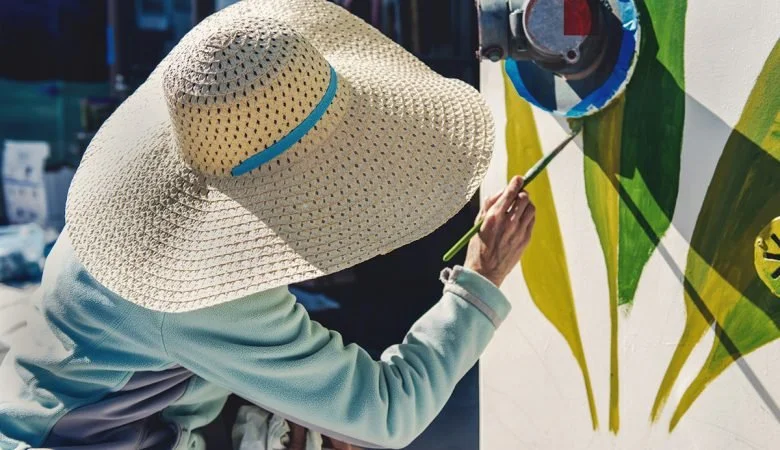VICE Magazine
“Leather Granddaddies”, for VICE Magazine
His collection includes an original Diego Rivera, sculptures by Nancy Grossman, and, most notably, one of the world’s largest assortments of vintage ephemera and relics from New York City's gay leather scene. For VICE Magazine.
Unique Gallerie & Collectibles sits on a quiet, tree-lined street in one of those North Brooklyn neighborhoods that has been transformed over the past decade from an ethnic enclave to a terminally hip brunch destination. Hector Matos, who founded Unique Gallerie in 2012, grew up in the area and watched the changes take place firsthand, along the way acquiring the antiques and artworks that fill the small shop. His collection, he told me, includes an original Diego Rivera, sculptures by Nancy Grossman, and, most notably, one of the world’s largest assortments of vintage ephemera and relics from the city’s gay leather scene.
Matos encountered his first pieces of homoerotic art in the early 80s while scouring New York City garage and estate sales, finding some of his most interesting items in basements and closets. His collection now boasts a number of impressive names—works by Tom of Finland, Arthur Tress, and Robert Mapplethorpe have all found a home here—but as his passion for the subject grew, he began to expand his horizons beyond fine art and became interested in magazines, clothing, leather toys, accessories, masks, personal photographs, and letters, which lend intensely sexual yet oddly touching narratives to the other items.
Matos was initially drawn to this substratum of the art world for purely aesthetic reasons, but in time his interests put him in touch with people who helped him understand the history of the scene as well. He credits Jack Stein, a social worker and fellow collector, with helping him uncover the secret meanings and significance of the various parts of his collection. Another key helper is Matos’s friend and assistant Nina Pearson, who has curated and meticulously catalogued every piece he owns.
Matos dreams of displaying his collection in New York galleries and museums and has recently taken a major step toward that goal, getting some of the works in the Leslie Lohman Museum of Gay and Lesbian Art. “It is my strong belief that this collection should be in some kind of public space or museum,” he explained to me. “I want this era of homoerotic subculture to be unveiled and not forgotten.”
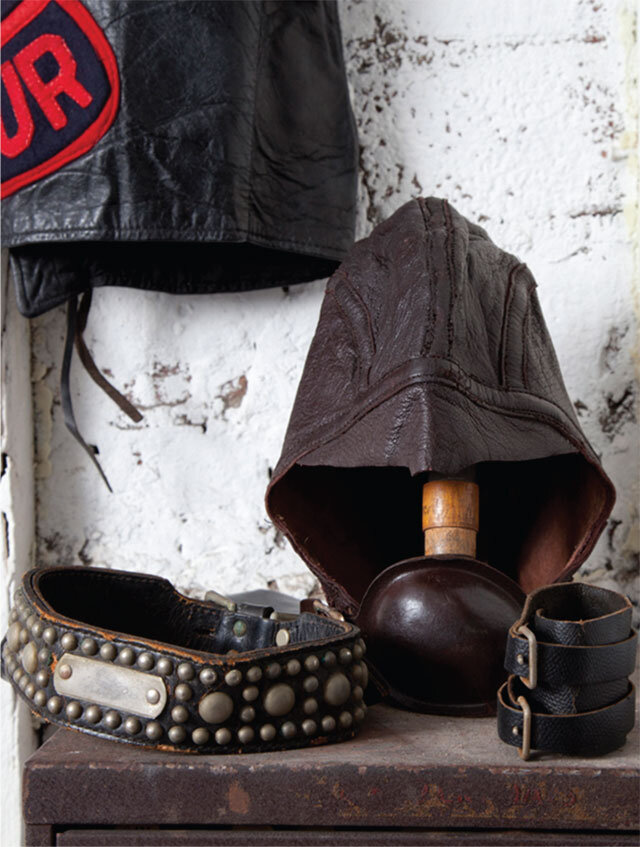
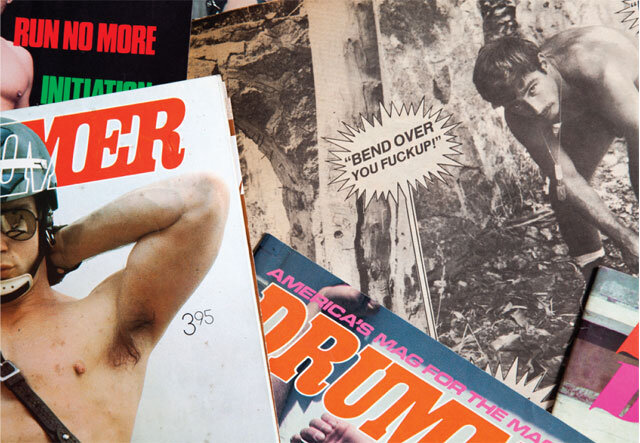


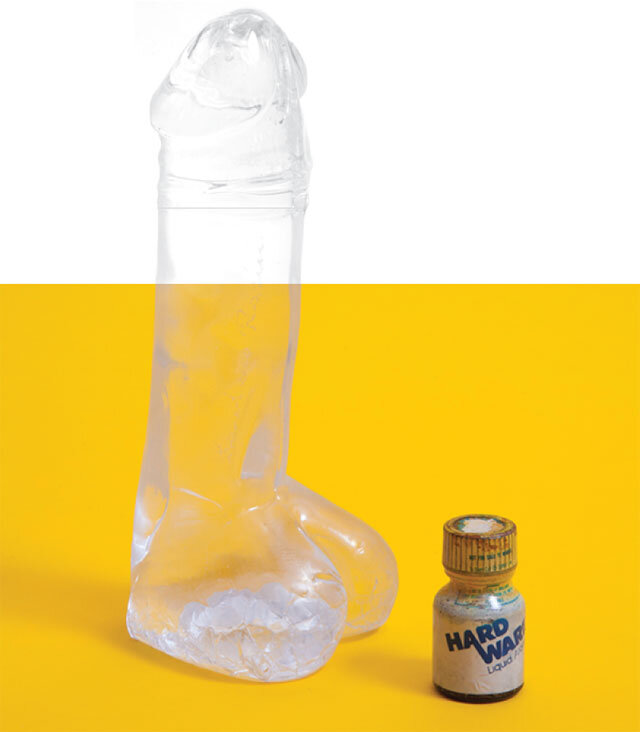

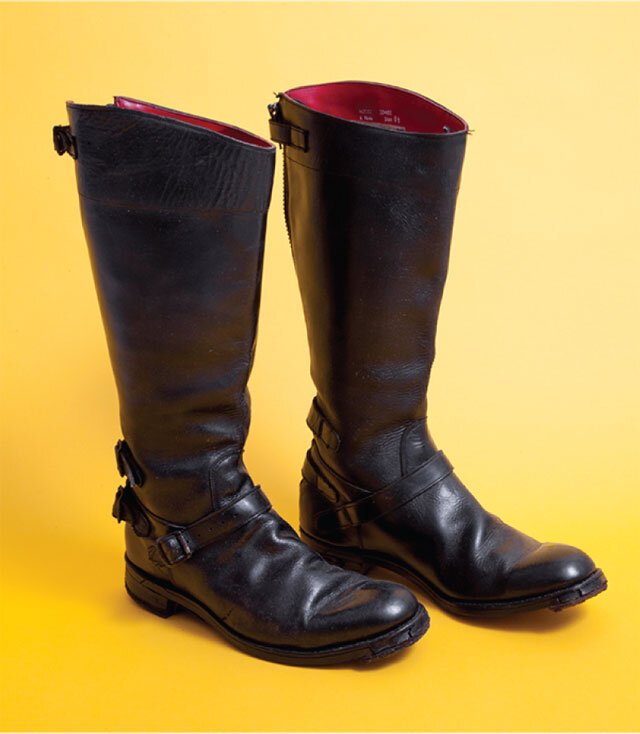
3x3 Magazine: Joost Swarte
Joost Swarte is one of those rare artists whose dedication to creative transformation reveals itself in a profound respect for various disciplines, their history and methods. In everything he touches, Joost becomes more than an illustrator proposing a two-dimensional solution; he evolves into the designer, publisher and architect.
Born on December 24, 1947, in the Dutch town of Heemstede, Joost’s childhood was bursting with inspiration that would eventually culminate into the backbone of his trademark ligne claire (clear line) style. Ligne claire, which was pioneered by Belgian artist Hergé of Tintin fame in the 1920s, is defined by strong lines, uniform colors, subdued contrasts and minimal hatching. Joost’s own interpretation of ligne claire pays homage to the bold forms of the Dutch De Stijl (“the style”) movement while paying homage to the simplicity of the comics he loved as a child. In analyzing the influences of his childhood, Joost discovered a potential for visual storytelling that would eventually become the foundation of his own artistic expression.
Joost’s iteration of ligne claire signifies more than an appropriation of his cherished childhood comic book heroes, however. He explains, “After some years, I wondered why the comics I read when I was young had such an impact. I analyzed the works and learned of their cinematographic approach. I started to work in a more graphic style, less expressionistic. Inspiration came from Olaf Gulbransson, Albert Dubout, John Held Jr., Miguel Covarubias, Steinberg, etc.”
In the late 60s, Joost began studying industrial design at Dutch Academy in Eindhoven. “In high school, I did not really know what I would like to study…my father hinted towards this [field], as it had a combination of my interests: drawing and technique.” But as Joost pursued those studies, he began to cultivate a deep appreciation for the alternative comix movement. Joost started creating comix of his own and was galvanized by this new and raw approach to storytelling. “The freedom of speech that was normal in literature and journalism [became] normal in comix too.” The censorship of the Academy would eventually prove too constricting, and Joost’s creative energy turned towards his personal work within the burgeoning comix movement. In pursuit of creative freedom, Joost left the Academy to explore the world through his own graphic stories.
“My early comics were heavily inspired by Crumb, Shelton, Moscoso,” Joost explains. In 1970, he started his own comic book series, Modern Papier, and also began publishing in the underground Dutch comic magazine Tante Leny Presenteert, firmly rooting himself in this up-and-coming visual movement.
Having established a genuine community, Joost found himself having profound conversations with other artists, yielding insights that would continue to reveal inspirations. “We discussed the heroes in the field: Little Nemo, Krazy Kat, Milt Gross, Rube Goldberg. I remember I published an old work, Little Jimmy, by James Swinnerton. I tried to find out where he lived — a nursery home for the elderly — and did send him a copy.”
As the burgeoning alternative comix movement continued to gain momentum internationally, underground artists received access to an unprecedented platform. In 1980, Joost participated in the Salon International de la Bande Dessinée in Angouleme, France; this exposed his work to a new audience and led to his work being translated into English, French, Italian, German and Spanish.
Having created a name for himself in the alternative comics world (most notably via Jopo de Pojo, Katoen + Pinbal and Dr. Ben Cine and Dee), Joost took the next creative leap. Expanding on his deep understanding of illustration and comics, he founded the publishing house Oog & Blik, with Hansje Joustra, in 1985. Their partnership focused primarily on graphic novels, underground comix, autobiographical comics, picture books and Joost’s silkscreens. The venture allowed complete creative freedom for Joost while also providing a platform to champion other illustrators, even translating foreign artists’ comics into his native Dutch.
But perhaps most interestingly, Oog & Blik also provided Joost an opportunity to diversify and expand his creative problem solving. His work had often been deeply personal and reflective. “The characters in my comics are almost all carriers of elements of my own character. My doubts, my love for music, my positivity [are found in] Jopo de Pojo; my drive to teach, my search for solutions [are found in] Anton Makassar. In fact, the dialogues my characters are involved in are interior dialogues in my head.” In establishing the publishing house, Joost began working with distinguished artists. This helped Joost develop more than an expression of his interior universe: he began to think like a designer.
While Joost’s aesthetics always remained artistically relevant, his deep curiosity and reverence for different fields always contributed to his adaptivity. His playful juxtapositions and bold graphic style remained a constant as he began to create a prolific body of work that established him as much more than an underground comics artist and publisher. Joost expanded upon his illustration career by creating covers for The New Yorker; designing posters, CD covers, stamps, bookplates and logos; and creating sculptures and large-scale stained glass windows. He even dabbled in furniture design, perhaps most notably with the carrot table: a sleek, minimalist number featuring a clear glass top and four carrot legs. It’s a piece that managed to be both chic and cheeky.
In 1996, Joost embarked on his largest project to date: De Toneelschuul. Located in the oldest part of Haarlem, De Toneelschuur was Joost’s foray into architecture. Resolutely modern and fresh, this architectural gem managed to fit seamlessly amongst the patchwork of the city. Featuring two theaters and two movie theaters (no Hollywood nonsense allowed) this creative leap, in partnership with the prominent Dutch architectural firm Mecanoo was not just a theater, but also a hat tip to the community and its architecture.
In his interview with Dutch Profiles, Joost explained the connections between illustration and architecture. “The users or residents of a building should be viewed as your readers. You hand them something and they finish it. But you need to give them enough space to finish to their own tastes.” In 2004, Joost was commissioned to create a large-scale, stained glass window for the Palace of Justice in Arnhem (Netherlands). Featuring vignettes of characters behaving selfishly and malignantly, the piece invokes the narrative history of stained glass while updating the message into a contemporary and wholly relevant critique. We are, essentially, reminded of why such an institution needs to exist.
When discussing current projects and the future, Joost projects the same energy and joy that have punctuated his career. He talks excitedly about yet another stained glass project, this one featuring a delicate composition of birds. Joost even shares his sketches, pointing out the negative space that will allow the outside in. “The drawn line is the lead. The white is transparent, so you can see what the weather is like.”
Joost’s intellectual curiosity and appreciation for “adventure”, as he so nicely articulates it, are as alive as ever, and I am struck by the subdued playfulness that has presented itself throughout his career. At one point, I’d asked how he engages his audience: “You should never underestimate [them]. They want to be surprised. At least I do.” With over 50 years of surprises under his belt, Joost surely has many more in store.
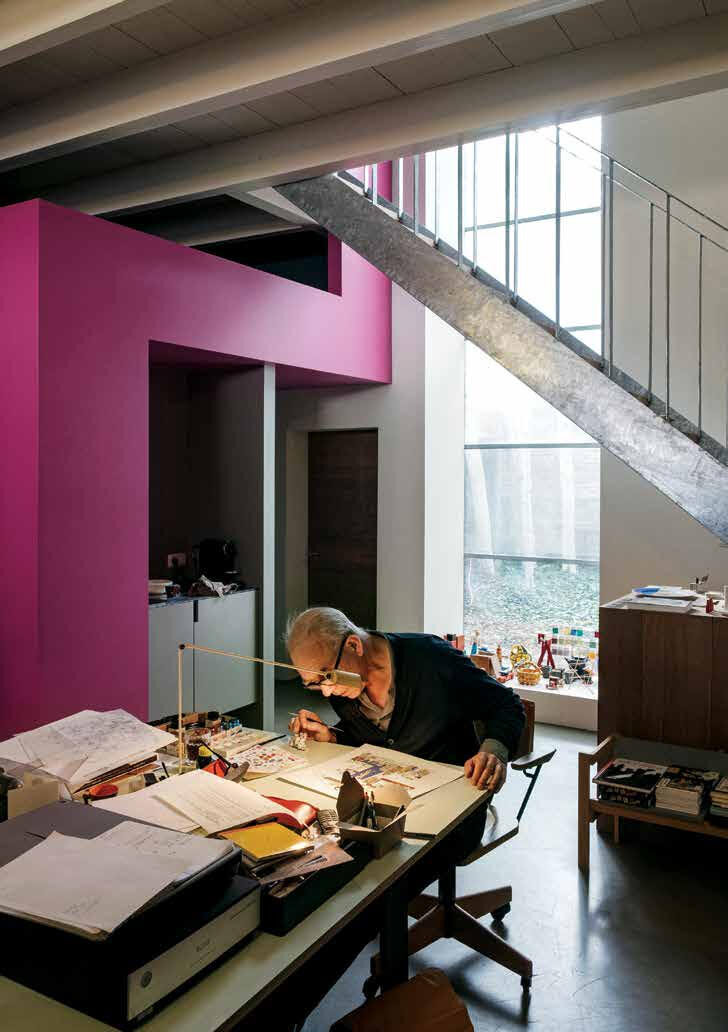
Improving Brand Identities with Custom Art
It’s a tricky time to be a business owner, and the competition is fierce. But there’s one thing that’s consistently been able to help create a distinctive brand and customer experience: custom art.
So much more than a mere branding opportunity, custom art has been proven to help businesses stand out, attract new audiences, and create a unique experience that will entice patrons and keep them coming back for years to come. Are you curious about exploring ways to infuse creativity and uniqueness into your establishment? Custom art is the cornerstone of creating a distinctive visual identity and appealing atmosphere, creating the foundation for a sense of community amongst employees and customers alike.
Although it can be quite the investment, rest assured that there are best practices to guarantee your new curation gives you the most bang for your buck. Curious about how to reinvigorate your business and bring it to the next level? Read on to learn more about the power of custom art and learn how to truly make it your own.
What Is Custom Art?
Unlike mass-produced work, custom art is commissioned and tailored for a specific brand or space. It allows business owners the opportunity to get their hands dirty and collaborate in the creative process by tapping into their tastes and preferences to create a distinctive atmosphere that will be completely unique to them, celebrating the spirit of the business.
Custom art tells a powerful brand story that transcends language, keeping customers and employees positively engaged. But it also offers so much more:
- Opportunities to create memorable experiences. Believe it or not, people still love to shop in person—and business owners need to do more to differentiate themselves and provide a unique atmosphere. Custom art provides a beautiful and special solution.
- Powerful ways to reflect brand identity. Each and every business has a unique mission, vision, and value system. Tap into what makes you you with custom art and find greater success in a crowded marketplace.
- Unparalleled visual storytelling. Collaborating with a creative on custom art allows you to create a powerful narrative that resonates with customers on a deep, subconscious level.
- Clever ways to foster creativity and innovation. Custom art is the key to creating an inspiring workspace. Are you invested in workplace satisfaction and boosts in productivity? Integrating artwork into offices, meeting rooms, and common areas can be your secret weapon.
- Opportunities to connect with the community and support local artists. If you’re invested in contributing to the fabric of your community, you can collaborate with a local artist to create something authentic and meaningful. Another benefit? Custom art with a local feel will also pull at the heart strings and foster stronger connections.
- How To Commission Custom Art
With various styles, themes, and mediums at play, there are literally countless ways you might want to beautify your business. But before you get too deep into the process, take a step back and think about what resonates with you. You might look to other local businesses whose aesthetic you admire, or even take to Pinterest to create a sort of “vision board”. Having at least some idea of what appeals and what doesn’t can go a long way in streamlining the process.
Regardless of whether you’re working directly with the artist or with a curator, custom art requires collaboration, good communication, and mutual understanding. You have a partner in executing the perfect vision, but the onus is on you to help define the direction, discuss concepts, and provide detailed feedback.
Being clear about where the work is going will help the artist understand your needs, which means less back and forth and more satisfaction for both parties.
How To Find An Artist
It may feel overwhelming, as there are admittedly a number of ways to find an artist. So, let’s break down the different avenues and help you establish what makes the most sense for you. We promise: this is the fun part!
Art Fairs and Exhibitions. These events showcase many different styles and artists while giving you a chance to meet the artists in person.
Art Galleries. Many artists display their work in galleries, and the gallerists will be happy to describe a creative’s background and any relevant projects they’ve taken on.
Online Platforms. You’re already in the right place! Websites like Artrepreneur, Saatchi Art, and Behance feature a broad range of artists, including those who take on commissions. You can also flex your hashtag muscles and explore social media.
Art Schools and Universities. Ready to meet the latest crop of art stars? These institutions are hotbeds of talent, and they often host exhibitions.
Artist Residencies and Open Studios. These provide a direct look into the creative process and give you an opportunity to engage directly.
Working With Art Consultants
If looking through the list above leaves you feeling uneasy about going it alone, that’s perfectly normal. Between the time-consuming nature of finding a trustworthy professional and having the knowledge to negotiate a fair price, finding the perfect artist is not for everyone.
But don’t let that barrier discourage you from investing in your business. Professional art consultants are always happy to help you explore this new terrain and understand the landscape.
An invaluable partner in selecting custom art, your art consultant will have a deep knowledge of the art world, as well as other critical skills like fair negotiation and project management. Some other things they bring to the table include:
- Expert guidance. From selecting the right artist to helping you navigate the commission process, an art consultant helps guarantee that the final piece aligns with your brand’s narrative and aesthetic.
- A robust network. As seasoned art world professionals, consultants have connections to hundreds of artists across different styles and mediums. You can trust them to introduce you to jaw dropping creatives that may not have been on your radar.
- Budget management. A consultant can help you establish and manage a budget, making sure that you get the most out of your investment.
- Logistical support. Perhaps their most valuable asset, art consultants will handle the logistics of the commission process from contract negotiation to installation, making sure the project stays on track and letting you run your business.
Preparing For Your Custom Art Project
Let’s dial it back a moment and revisit a crucial step: how do you want to communicate your brand? Before you commission custom art, you’ll need to be very clear about your brand values, mission, vision, and what set you apart from the competition. Understanding your target audience is also crucial: art and design should appeal to the people interacting with the space.
Take some time to create a brief that an artist or art consultant can reference regularly. Be sure to include details about what you want, like colors, size, and style, but don’t neglect to communicate other abstract or emotional qualities. What feelings are you hoping to elicit? Which aspects of your brand do you hope to highlight? A brief helps your collaborator understand your needs, so the more detail, the better.
Brand materials like logos, color palettes, preferred typography, and other preexisting stylistic guidelines should also be included to help the artist understand you visually. Do you have old campaigns or marketing materials that still feel “you”? Sharing them will provide even more insight.
Consider The Physical Space
Even if you enlist the help of a professional, it’s wise to take a moment to consider the architectural elements of your business. Do you have a massive, blank wall? You’d likely need something larger to fill the space, or multiple smaller works.
Larger murals and sculptures can make a bold statement in corporate lobbies and outdoor spaces while smaller works are more appropriate for the boardroom. Regardless of the space you’re trying to enhance, your custom art should exude the energy you’d like to infuse into your business.
Your custom art should also reflect the company type, alongside your unique brand identity. A multi-generational, family run business may lean more classical in their choices, while a buzzy tech startup may represent itself with edgier, modern works.
From the most recognizable Fortune 500 companies to your beloved local coffee shop, custom art goes beyond the generic and allows you to celebrate your unique brand personality. Are you eager to expand your audience? Would you like to enhance your business’s ambiance while forging deeper connections? Custom art is the key to creating a memorable and positive experience, and we guarantee that your investment will pay off for years to come.
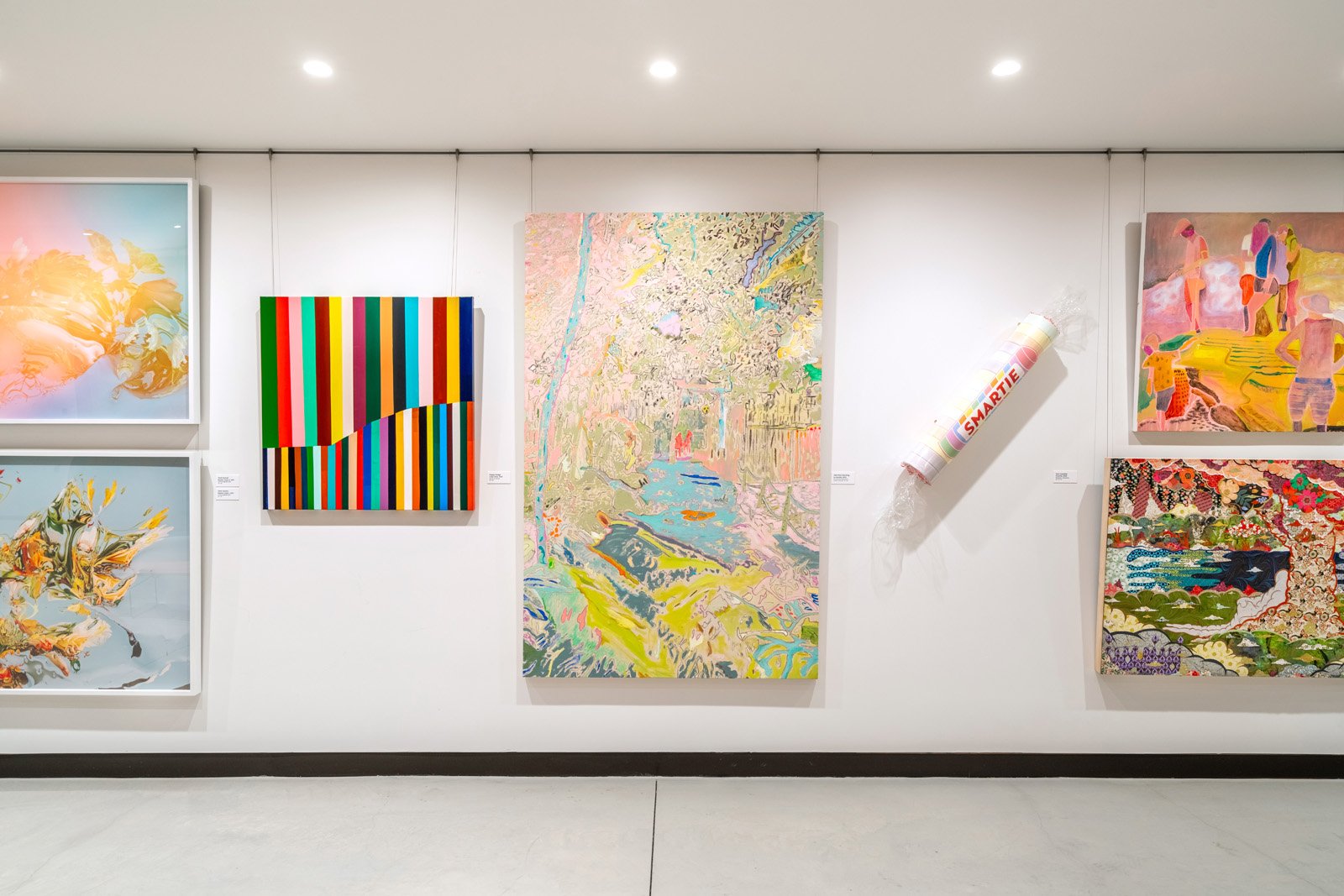
Welcome to Suplex City
ALE+ALE traded their romantic European digs for something a bit more sinister while working on one of our favorite projects, the inimitable “Suplex City” – home of WWE® 2K17and the latest addition to the flagship WWE video game franchise.
Showcasing the ALE’s more ominous side, the atmospheric artwork for Suplex City creates a chilling environment for wrestling fans to engage with their favorite heroes and antiheroes. Per their press release, “WWE 2K17 delivers an unprecedented combination of authenticity, realism and action-packed gameplay in a WWE video game experience, including the largest roster of WWE and NXT Superstars in franchise history”. It was pretty exciting to be involved with something of this magnitude.
While we are excited to share the images with you here, it goes without saying that you should allow yourself a moment to explore this remarkably detailed and atmospheric environment. Just click here – and don’t forget the way back home.
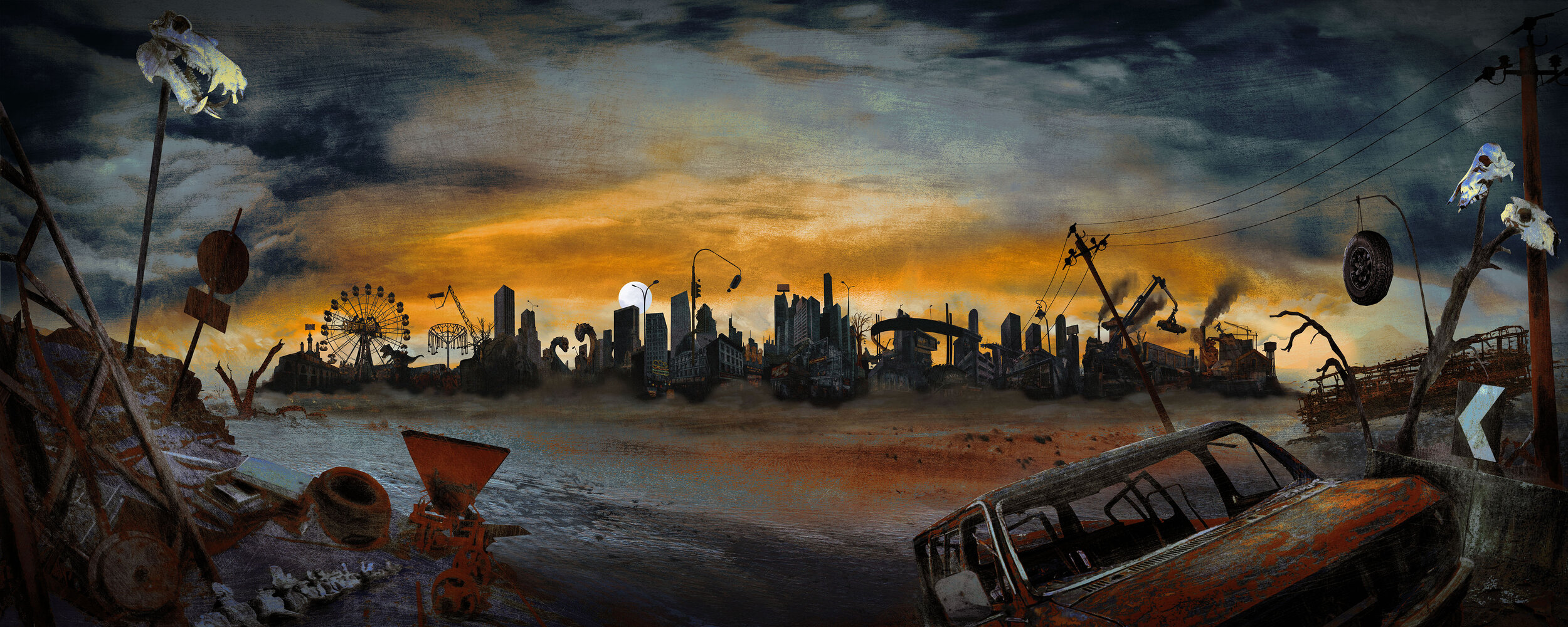
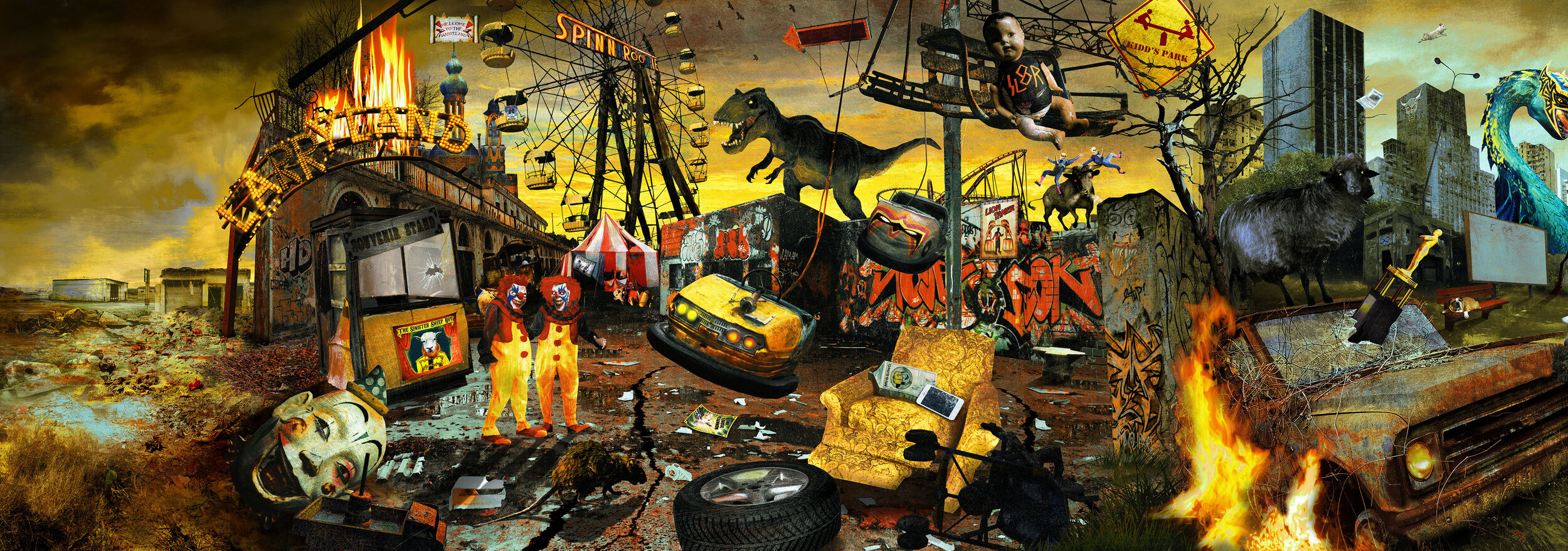
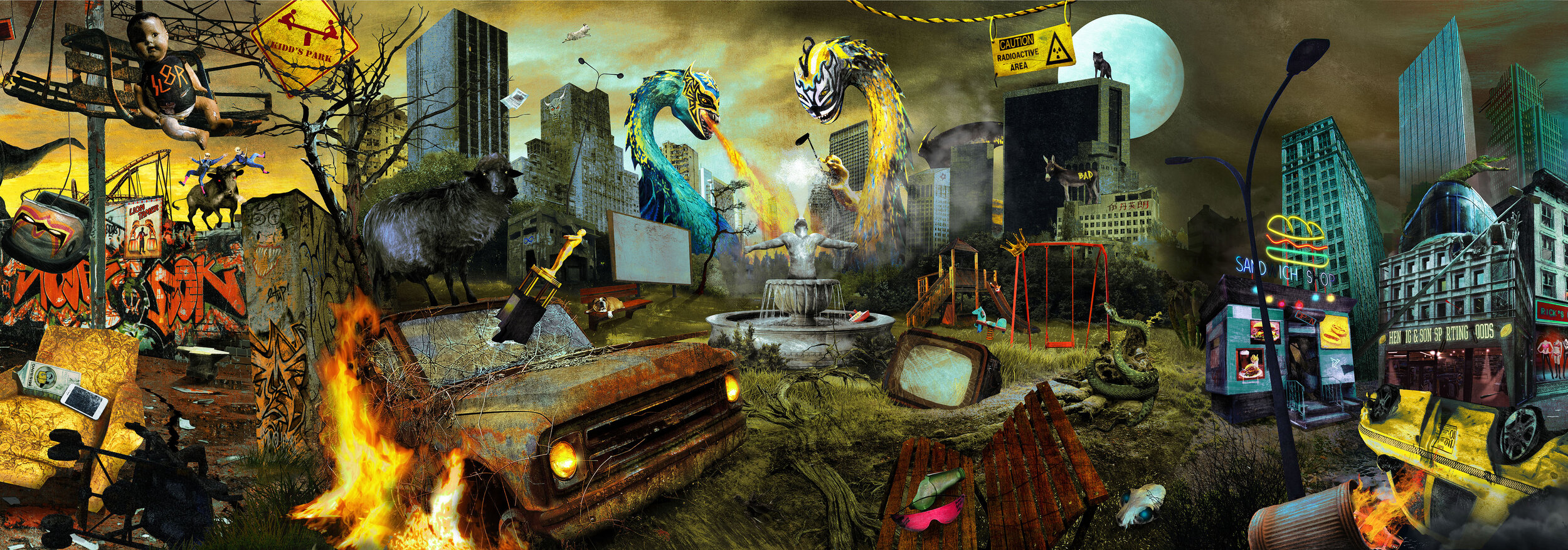
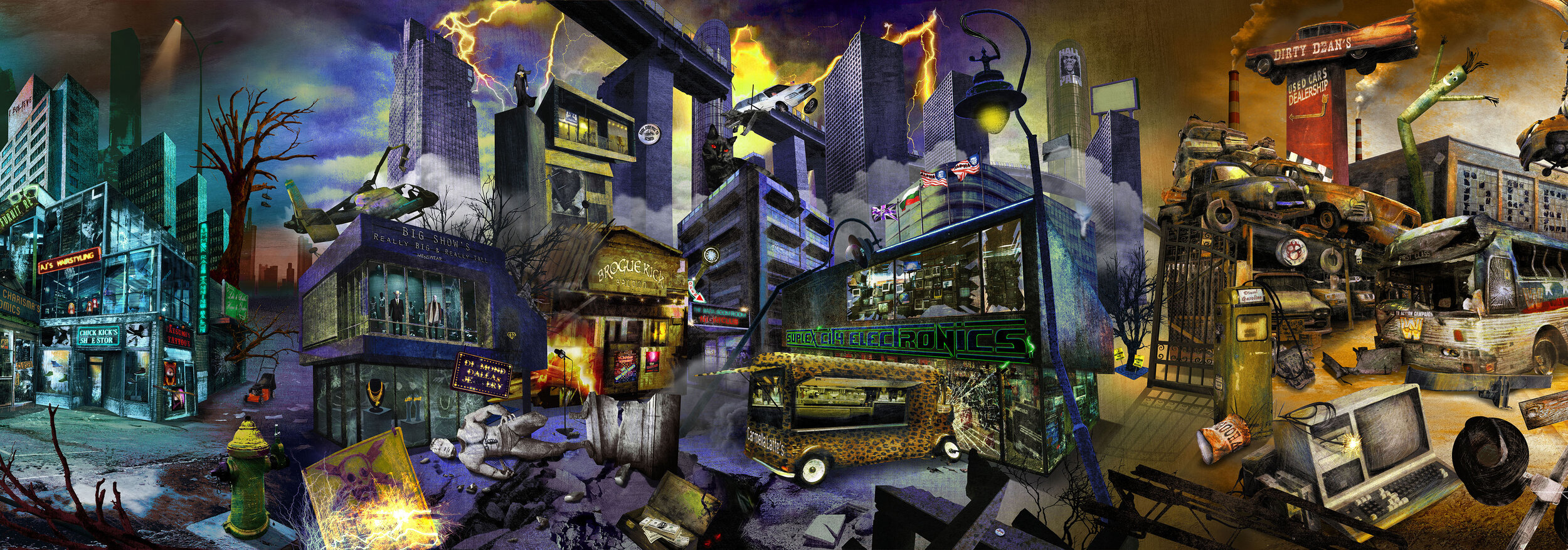
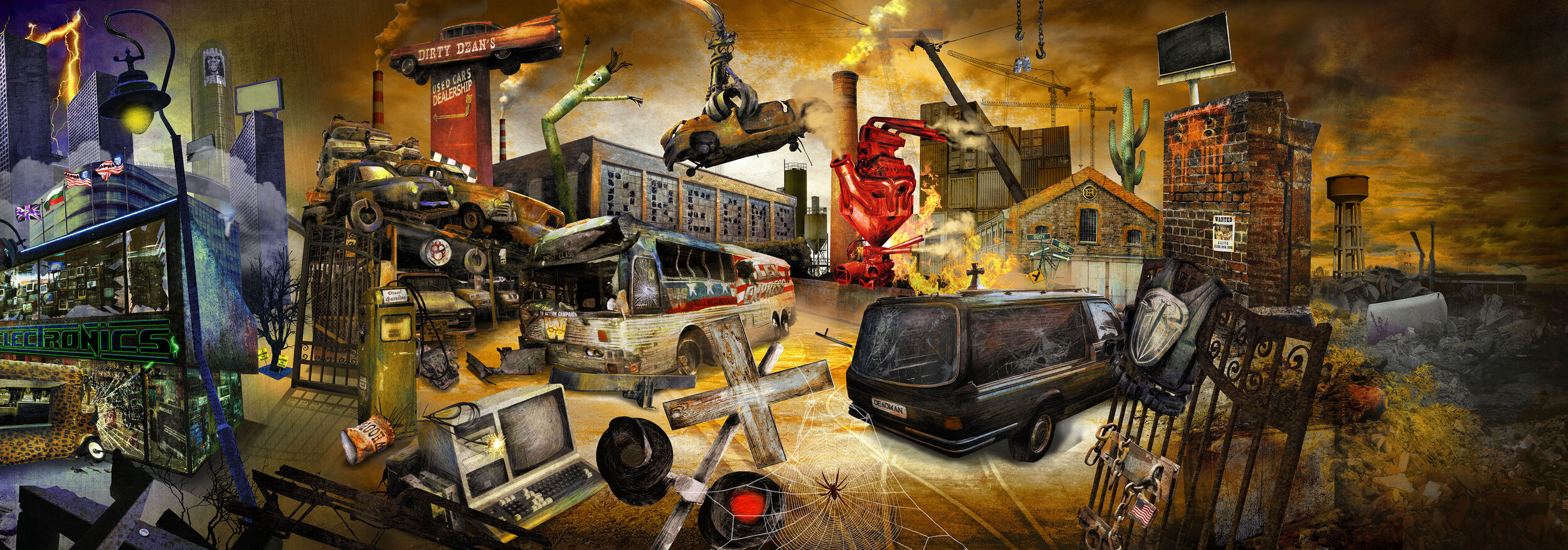
Can Corporate Art be a Catalyst for Positive Change?
Ancient Roman frescos advertising a market’s wares, thoughtful quotidian scenes decorating an early 20th-century postal lobby, and the iconic art nouveau entrances of the Paris metro: corporate art has a long and storied history of adorning and innovating public spaces, and it’s for good reason. Humans have relied on art to beautify and create personal connections since the earliest cave drawings, but did you know that its true power actually runs much deeper?
Many companies are aware of the power of corporate art when it comes to establishing a strong brand identity, but what if the investment signals something more profound? What if investing in art not only benefits a business, but the surrounding community as well?
Leading professionals understand that it’s crucial to apply innovative thinking when addressing issues of social responsibility, and art can play a unique role when it comes to taking action. In fact, the emergence of corporate social responsibility (CSR) practices is changing business attitudes toward the arts, leading to a definitive win-win for businesses, communities, and independent creators.
So what, exactly, are we aiming to address, and how does corporate art function as a tool? From maximizing internal efficiency in a socially responsible way to addressing issues of culture and diversity, the importance of art in a corporate setting manifests in varied and astounding ways.
Advancing Community Priorities Through Corporate Art
Curious to better understand the public value of the arts in King County, the Artsfund Social Impact of the Arts study wanted a deeper look at how the arts advance community priorities and positive results for both participants and non-participants. “With a primary focus on youth development and education, health and wellness, and neighborhood vitality, the study probes the potential for arts to influence more equitable outcomes”. Artsfund didn’t take any shortcuts: in fact, their report combines a county-wide public poll, a landscape scan of King County arts, cultural, and heritage nonprofits, a review of 150+ national research resources, and case studies of ten regional arts organizations.
The results are fascinating, as well as a call to action. We intrinsically value the arts in our lives – they “entertain, inspire, inform, and provoke us.” They also play a crucial role in invigorating communities and shaping regions, which help define an area’s identity while giving it importance and influencing the economy. However, the research also reveals an unfortunate disconnect between the undeniable value of the arts and the local understanding of their impact, which has the potential to threaten important programs while misleading decision-makers.
But instead of framing this scenario as all doom and gloom, perhaps it presents a crucial opportunity to learn and lead. Acknowledging that other cities around the world are successfully implementing arts-based strategies to influence economic, community, and social development, the study helped King County understand that to meet their most pressing challenges, “We will need to find a way to leverage and expand the powerful impacts of the arts so more people and communities can benefit.” Sometimes, we don’t need to fully understand how something works in order to give it another try – sometimes, we simply need a fresh new strategy and perspective.
Investing In Community Through Corporate Art
According to Culturehive, business funding for the arts comes primarily from two sources: marketing spend (like sponsorships), which results in a clear branding benefit, and from corporate community investment budgets. “Community investment is a distinct part of CSR (corporate social responsibility) and relates to a company’s commitment to the community via the contribution of finance and skills. Companies often use their community investment activities as a way of contributing to solving social problems.” These activities ultimately become a critical part of a company’s communication strategy and demonstrate a firm commitment to responsible corporate behavior.
And these commitments have long-term implications for both businesses and the communities they inhabit. The arts have historically been linked with lower crime rates and greater life satisfaction, which makes an area more desirable and, ultimately, more economically robust. Imagine a bustling new arts district on a forgotten stretch of main street: picture the quaint new cafes and farm-to-table restaurants. From offering new places to allow neighbors to mingle to creating new opportunities for budding entrepreneurs and employees, corporate art can play a critical role in growth and development.
Using Corporate Art To Invigorate From The Inside
If you’re invested in contributing to positive change in your community, sometimes the best place to start is right at home. And, as Culturehive also reported, arts projects can present unique ways of engaging and even involving staff. “Involvement can improve the creativity of organizations and its people, can inspire innovation and new approaches to work, and provide informal ways for staff to engage with each other.” It may sound overly simplistic, but don’t we have a greater ability to provide a positive impact on the people we interact with from day to day?
A community is no better than the sum of its parts, and facilitating happier work environments with a greater sense of connection creates a strong foundation for something bigger. From a three-person mom and pop to the giants of Silicon Valley, no one’s potential should be undervalued.
Learning And Growing Through Corporate Art
A recent course at the Sotheby’s Institute of Art aimed to investigate the role of the art world in addressing issues of social responsibility, as well as how we might apply innovative thinking. “To work with social responsibility, museum, and gallery professionals are developing new strategies and applying innovative thinking to engage with contested notions of culture, identity, diversity, social justice, and climate change”. And these strategies are critical for businesses working with corporate art.
Social responsibility and art are interconnected by accountability issues, and in the current day, art isn’t just a way to differentiate your business; it’s critical to its survival. Sotheby’s elaborates on these core issues of accountability, including:
Economic: Businesses must plan with efficiency, resilience, fair trade, and profitability/sustainability.
Legal: Companies must adhere to rules, regulations, policies, procedures, and best practices.
Ethical: Businesses must act responsibly and in the interests of general welfare – even when it’s not legally required.
Philanthropy: Corporations should contribute directly to their communities and social projects, even when it’s not obligatory or unessential to their day-to-day operations.
Environment: Thoughtful enterprises should care about conserving natural resources and reducing their environmental impact, and environmentally conscious and sustainable art activities or activations can be a way to facilitate that.
Human Rights: Corporate art has the power to address imbalance and social injustice by redirecting the focus to diversity, equity, and inclusion.
From community-centered murals that celebrate the local culture to artfully illustrated advertisements scattered across the country, we’re openly surrounded by an abundance of corporate art – and perhaps that’s why we sometimes lose sight of its true value. But if we take a moment to dig a little deeper and open our eyes and hearts, a touching narrative of the best of humanity rises to the surface. For what are we without our neighbors? Perhaps we’d all be better off if we looked towards art to reconnect and rediscover what’s really important.
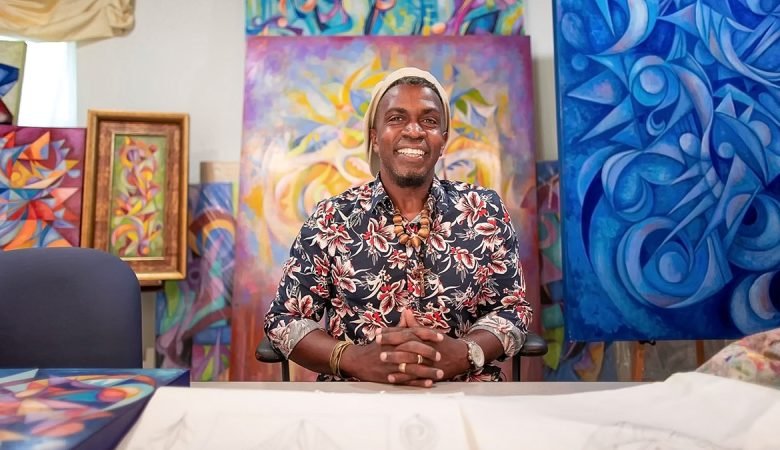
Airbnb
Nom Wah Tea Parlor
Dumplings in NYC’s oldest dim sum parlor
Tucked in a historic corner of Chinatown, Nom Wah Tea Parlor proudly boasts an old-timey feel. Owner Wilson Tang stays true to his family’s legacy, slinging classic dim sum recipes that have kept New Yorkers lining up for nearly 100 years.
Magic Jewelry
Healing stones and aura photography
While you can sift through their collection of crystals and other new age goods, most patrons visit Magic Jewelry to have their auras captured. Sip on a cup of oolong as employees decipher your photograph and tune in to your personal energies.
Ruby's Bar & Grill
Enjoy a beer at this Coney Island mainstay
Family owned and operated since 1972, Ruby’s is more than a great dive: it’s an institution. Settle in with boardwalk favorites like fried clams and funnel cake and get ready to enjoy some of the best people watching New York has to offer.

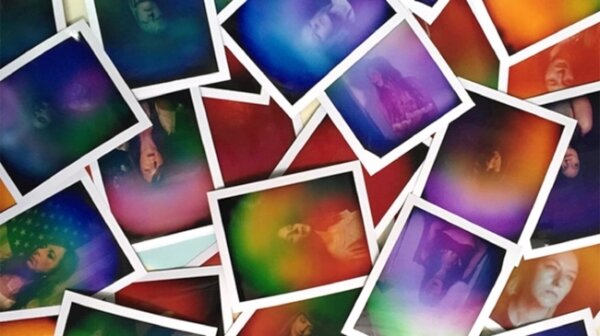

Moving in Together? 12 Tips for Merging Your Art Collections
Home is where the art is, and moving in together presents a whole new challenge beyond how to divide up domestic responsibilities and the cable bill: how to combine art collections.
It doesn’t matter if you’ve decided to build a life with the person you love or need someone to split that dastardly rent: creating the ideal home requires teamwork, patience, honesty, and compromise. But in addition to making sure you’re on the same page when it comes to obvious issues like cleanliness and individual responsibilities, your home should also feel like your sanctuary — and that goes for the person you’re creating a space with, too.
So while we can’t necessarily help you navigate that awkward conversation regarding that beloved recliner chair that’s a few years past its prime, we can help you establish guidelines about how to merge your precious art collection with another to create a whole new space that reflects both your identity and your status as a couple.
Understand Your Aesthetic — And Theirs
Before you begin to create your dream space when moving in together, you need to get on the same page — and that means understanding which styles and pieces resonate with you most strongly. Take notes about the spaces that inspire you and the “vibe” you aspire to create and ask the person you’re moving in with to tackle the same exercise. The clarity will help facilitate a positive and clear exchange.
Just remember that any one person is likely not going to have a streamlined vision, and that’s something to be embraced. It’s perfectly reasonable to be in love with a traditional portrait of your grandparents and a funky handmade ceramic at the same time. In fact, it’s unique juxtapositions like these that make a home fun and unique!
Kick Off Your Conversation With Kindness
While it’s easy to joke about a dreaded eyesore, there’s a very strong possibility that this is a real conversation you’ll need to have. Soften the blow by starting off on a more positive note and thinking of the art hanging on their walls that you find beautiful and compelling. Let them know how much you admire these works and that you’re excited for them to enrich your life so intimately. Not only will you start your conversation on an uplifting note, but you’ll start to breathe life into your new space by painting a picture of what things will look like.
This can truly be as simple as saying something like, “I really love that abstract photograph that you have hanging in the hallway and can’t wait to be greeted by it when I come home.” They’ll appreciate the positivity and likely respond in kind. And better yet, you’ll find that this conversation means the curation has already begun.
Identify Your Non-Negotiables Before Moving In Together
At the end of the day, combining art collections and decorating a home when moving in together will require a lot of honest communication and compromise, and one of the trickier parts of this conversation is getting over our attachment to things. This is incredibly human and a source of frustration and unease, but you can overcome it: simply take a breath and walk around your space. and identify what your absolute non-negotiables are.
Try your best to keep this list somewhat limited: it doesn’t mean that half of your collection will disappear! But homing in on the works that spark the most joy and have the most personal resonance is important when it comes to merging aesthetics. It may also be helpful to remember why these particular pieces mean so much to you: were they made by a loved one? Or were they a hefty investment? Points like these can make all the difference when pleading with your case.
Prepare Yourself For Feedback, Both Good And Bad
We know that you have a great eye and strong opinions about the art you display in your home, but the healthiest way to handle a conversation about how to decorate means being prepared to hear some constructive criticism yourself. There may be a piece that you love, but your new roommate or partner may not feel so enthusiastic — and that can be a tough pill to swallow. Try to remember that opinions about art are ultimately subjective, and what you’re hearing is not a criticism of you.
Attempt to navigate a solution that works for both of you. For example, if you have a piece prominently displayed in a high-traffic area of your home that isn’t being met with enthusiasm, you may want to consider placing it in another room. This can also be used as a bargaining chip: the collection you’re building is a representation of both of you, which means you can also point out specific pieces that aren’t your favorites. Just do it nicely, of course.
Open Up To Something New
The best part about merging your cherished artworks with another’s is that you’re also being presented with an opportunity for growth. So often, our tastes become somewhat cemented and inflexible. And while it’s great to know what you like, it also means missing out on completely new pieces that can bring joy and value to your home. As an art lover, you possess a creative streak. Don’t stifle it!
Look at the other person’s collection thoughtfully and treat it as though you’re in a new museum or gallery for the first time. What catches your eye? Why is it interesting? How does it make you feel? Allowing yourself to have an open dialogue with the work can dampen the ego and allow you to open up to new visual experiences.
Consider Other Decorative Elements
Creating a gorgeous space begs you to consider more than what you’re hanging on your walls: things like furniture, ceramics, and other decorative objects play a key role in bringing a room together.
Perhaps you have a handwoven tapestry that you discovered on a trip abroad or a handmade vase tyou can’t leave behind. These pieces add life to your space and should be considered when thinking about how to pull your new home together. Even something like a simple mirror can help facilitate a flow that brings seemingly different aesthetics together in a fresh new way.
Look At Your New Space As A Blank Canvas
When you’re first moving in together, take advantage of the negative space. Where will your furniture go, and how much room do you really have? Lay your non-negotiables out on the floor and get ready to play: which pieces look fantastic together? Which provides an exciting new counterpoint that draws the eye? Creating a sort of “gallery” allows you to curate with confidence, and you can even place tape on the floor to mirror your wall space and establish where the works will go.
It takes a little extra effort, but being thoughtful and establishing measurements allows you to begin decorating with confidence while avoiding frustrating do-overs in the future.
Paint A Neutral Wall
The biggest concern when bringing large collections together is how to make them feel seamless, and an elegant, neutral color scheme adds warmth while tying your artwork together. Consider utilizing a neutral color scheme, like dark blues, browns, greens, and even warmer colors like yellow or orange. It’s amazing how a coat of paint can liven up a room and even more incredible how they can make a gallery wall look more thoughtfully curated.
Ask yourself: which colors make me feel most at home? And which works best with the artwork we already have? Paint small swatches to make sure the color is really what you’re looking for, as it almost always looks different when it’s out of the can.
Remember To Share Space
If you’re moving into someone else’s space — or they’re moving into yours — you’ll have to navigate what it means to create a home that’s meant for the both of you. Have a conversation about temporarily taking down artwork and even reorganizing furniture to establish a brand new environment that represents you both. Remember: you’re setting up a new life and bringing someone else into the fold, which means that both parties should feel like they are in a shared space and not long-term visitors.
Compromise, Compromise, Compromise
When two art lovers are merging their lives, there’s a possibility that there are simply too many works to handle. This can easily cause anxiety: you’ve put a lot of time, energy, and money into creating a collection that you feel proud of.
The solution? You can carefully store some pieces and rotate them throughout the year, which also brings fun and new energy into your home. Or, you can look for spots that you may have neglected in the past. There’s no reason why your entryway or even your bathroom should feel dull and unadorned! Think creatively about how to use the entire space, not just your living and bedroom.
Invest In Something New — Together
This was our favorite advice from art appraiser and gallery owner Spalding Nix: Make it a challenge to compromise on one piece of art each year with your partner. Depending on your circumstances, you may want to talk about investing in a new piece together. This needn’t be expensive – it just has to be something that you both love. It can serve as a focal point that you’ll both feel excited about while making everyone feel like they have a voice.
A bonus: if either one of you agrees that some of your collection is no longer bringing you the satisfaction it once did, you can take this opportunity to resell, giving you more wall space to play with and extra funds to invest in something new. For art lovers, this can be a beautiful way to connect.
Embrace Your New Life
It goes without saying that this process can create a little friction, but remember why you’ve decided to start a new home together. It doesn’t matter if you’re leveling up your romantic partnership or moving in with your best friend: you’re creating a nest, and you want to feel optimistic about the space you’re cultivating together. Bring your most non-judgmental and communicative self to the party and embrace an attitude of positivity and excitement. It goes a long way in making sure you’re off to a great start.
Remember: even the smallest apartment can feel like a luxury getaway when it’s decorated thoughtfully and with care. And with solid communication, honesty, and a little self-reflection, you can bring together totally different styles in a bold new way that feels homey, chic, and well-designed.
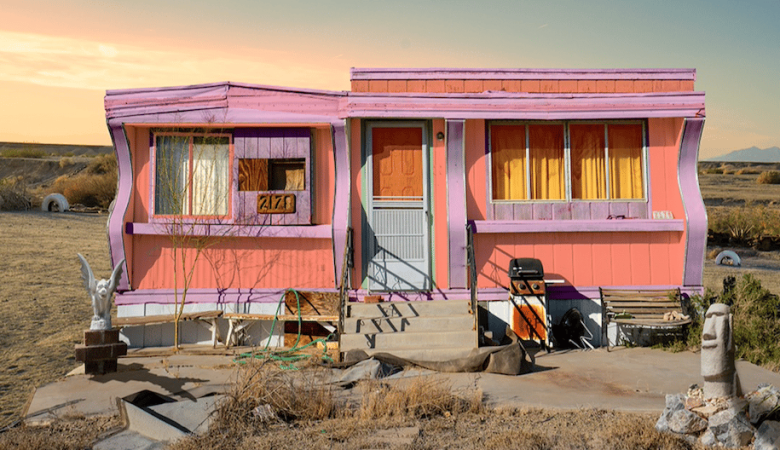
Art for Wellness: Enhancing Well-being and Productivity
We talk a lot about the benefits of relying on art to establish strong brands and foster customer relationships, but did you know that its influence goes much deeper than that? The psychology behind harnessing the power of art to influence customers also plays a powerful role for the folks behind the scenes: your trusted employees. And when you have a team that strives to give you their all, you need to take steps to create a healthy environment that encourages productivity and, more importantly, prioritizes their wellness.
Wellness and mental health are increasingly buzzy concepts in multiple areas of our lives, but perhaps none are as important as in the workplace. As the writer Annie Dillard once said, “How we spend our days is, of course, how we spend our lives,” and with the average person spending 90,000 hours at work during their lifetime – that’s about one third – it’s abundantly clear that our jobs have a huge impact on our quality of living. Ultimately, this means that investing in a healthy and productive workplace is critical for employers and employees alike. But how can we do that effectively? We think the answer is an unexpected one: with art.
But let’s look beyond the obvious: it’s not just about making a space more attractive. In fact, there’s fascinating evidence that makes a strong correlation between art, employee wellness, and productivity.
Great art possesses the power to rejuvenate the soul and unlock unseen potential.
Art Affects Brain Activity
At John Hopkins University, groundbreaking work is being conducted in this field. In fact, their International Art + Mind Lab has found compelling evidence that suggests that, because the brain is so agile, arts exposure of all kinds influences brain interconnectivity and triggers hundreds of billions of neurons, which ultimately impacts how we process and perceive information. And since our brains are so intertwined with reward systems, motor activities, perception, and the senses, it comes as no surprise that art has an ability to stimulate us in ways that are totally unsurpassed.
In fact, art specifically stimulates the brain to make sense of visual stimuli. Per Monica Kapur, professional art therapist, “Art stimulates the brain to make sense of the visual information it is receiving. Professor Semir Zeki, chair in neuroaesthetics at University College London, found that when people were exposed to a series of paintings there is a strong activity in the brain related [sic]. “The blood flow increases for a beautiful painting just as it increases when you look at somebody you love. It tells us art induces a feel-good sensation directly in the brain.”
Art releases feel good chemicals like dopamine and oxytocin while actively reducing cortisol levels – a fact which suggests, interestingly, that art itself is a drug. And if you think back to how you’ve felt after a night of dancing or an afternoon doodling or crafting, you likely remember how relaxed you felt. That is, ultimately, because our relationship with art is intuitive – art is hard wired.
Art Encourages Connections And Community
Imagine it: a drab, all-white workspace suddenly transforms into a thoughtful curation that gets all of those underused neurons firing. Is there anything better to bring people together? But in addition to these unique individual responses, there’s something larger that happens to the collective: art becomes a talking point and encourages conversation. And when you encourage conversation, you facilitate better camaraderie – which then evolves into more competent communication and, ultimately, problem solving.
Feeling a sense of camaraderie while working towards a common goal creates a healthier, more productive atmosphere. Edward Bock, “Cross Talk” (2013)_.
Art Therapy Reduces Stress
Multiple research studies have shown that just one art therapy session has the ability to reduce cortisol levels, otherwise known as the “stress hormone”. But we like to think that this forward-thinking approach has even bigger implications: what happens when a group is able to share in this experience? Art therapy can be considered a preventative measure to help negotiate stressful situations, difficult relationships, and manage anxiety – all while bringing employees together and, ideally, fostering a safe and healthy environment.
Art Activities Help With Information Recall
What if art can actually help focus and, in turn, information recall? According to a 2009 study in the Journal of Applied Cognitive Psychology, “subjects given a doodling task while listening to a dull phone message had a 29 percent improved recall compared to their non-doodling counterparts”. While these findings may not apply to certain situations – doodling would be a bad look during an important client meeting or interview – it’s an interesting tidbit that we should keep in our back pocket. Perhaps making art helps us keep our cool and focuses the brain.
Art appreciation and creation have the ability to help us focus and take it all in.
Making Art Work For You
Most companies have to be thoughtful about their resources, and it may seem like an insurmountable task to figure out how to make art work for their business. But we truly believe that, with a little ingenuity and thoughtfulness, it’s both achievable and worth the effort.
Get Employees Involved
Affordability is often a major concern, which is entirely reasonable. But what if there was a way to get employees actively involved? One option could be to have an art exhibit of pieces created by your own employees. Nothing is off the table: often the “worst” pieces are the one that spark the most conversation and inspire a few laughs. And it’s important to remember that we all have active lives outside of the office. Let Joanne show off her macrame! Invite Philip to share the photographs he lovingly develops on the weekends. Officemates will appreciate the camaraderie and the newly beautified space that speaks to them personally while celebrating their other talents.
Focus On Colorful, Serene Curations
We’ve discussed this previously (and invite you to learn more), but it’s been scientifically supported that certain colors possess the ability to affect our moods and energy levels. In fact, the University of Texas conducted a study that confirmed color actually does elicit specific reactions in the brain, which means that it can influence mood and, ultimately, our output. White, it was identified, is actually the worst choice: white walls often feel sterile, cold, and stifling. So unless your business is a literal scientific laboratory or operating room, focus on the colors that inspire and invigorate.
Investing in bright canvases signals brighter days ahead.
Don’t Hesitate To Consult The Experts
There are so many passionate companies and independent curators that are eager to make life in the office a more pleasant experience – don’t neglect them! Artrepreneur regularly releases great content to help educate and inspire (so happy you’re here, by the way), like this article specifically tailored to selecting fantastic works for the office. We also pride ourselves on our commitment to taking on projects both large and small: whether you’re interested in commissioning a 10 foot bronze sculpture or sourcing ready-to-print artworks that have been thoroughly vetted by our team of professionals, we’re here to point you in the right direction.
Team Building And Conflict Management
Immersive activities involving art have the power to facilitate collaboration and can help teams get to the heart of a problem in a more productive way. It may feel “woo woo,” but encouraging employees to collaborate on an art project is a great way to build connections: it effectively teaches team members which communication methods are working, and which aren’t. It can also help individuals understand how specific situations can be interpreted differently, which is critical when you’re trying to navigate through a tricky situation.
At the end of the day, there’s one thing we can promise you: investing in art and implementing unique art therapy approaches in business has a profound ability to make everyone’s lives just a little bit easier. And in the chaotic whirlwind that so many of us experience day to day, isn’t that the most important thing?
Corporate Art and Culture: Fostering Creativity and Innovation
How can you inspire team members to think outside the box? How can your business directly impact company culture while stoking the flames of innovation and creativity? Thoughtful corporate art has long been used as a foundation for branding and communicating company values, but incredibly, its worth runs much deeper than that. Just as many artists create to explore conceptually and communicate with deeper meaning, clever companies understand that investing in art inspires a similar cultural exchange in the workplace.
From breaking the ice and introducing an intriguing conversation starter to creating an energizing environment that galvanizes the team, making the decision to invest in corporate art is a top way to invest in your employees – and your business.
Sparking The Imagination: How Corporate Art Awakens Creative Thinking
While many businesses understandably focus on eliminating distractions and streamlining their environment, a purely minimalistic aesthetic can actually detract from the overall workplace experience – and hamper performance. Nothing is as uninspiring as a drab, soulless office. So why do so many companies continue to regurgitate the same tired look?
Vivid, energizing curations are proven to inspire, motivate, and, ultimately, increase productivity. But what’s more is that thoughtful corporate art choices can also help people think outside the box, which leads to unique solutions and a greater sense of purpose among workers.
There are, of course, multiple ways for businesses to resolve their own needs – every company has a distinct ethos and special place in the larger landscape. It simply depends on understanding what your larger intention for the work is.
You might, for example, want to establish a lively environment that elevates the spirit and invigorates workers. Look for bright colors, bold brushstrokes that spark feelings of movement, and energizing abstracts that capture the eye and inspire curiosity. Or, you may prefer to focus on relaying messages of positivity and connectivity, in which case you may turn towards work that highlights themes of diversity, interconnectedness, or inclusion. Regardless of your specific aim, the ultimate goal is rather simple: to stimulate and engage the brain.
Starting Conversations: Corporate Art’s Role In Facilitating Thoughtful Exchanges
Time and time again, clients relay that they are stunned by how their new curations encourage employees to pause, observe, and connect with colleagues. One of art’s greatest contributions is its ability to spark conversations: we question, we comment, and we ask others what they think. And this sort of connection in the workplace is truly invaluable for business owners and employees alike. In fact, this study suggests that leveraging arts-based corporate strategies increased employee creativity and growth by 59%
Openness and good communication are foundational to productive and positive experiences – they build trust and a sense of community. And the reality is, if employees feel like they are part of a larger web and that their thoughts and opinions matter, they’ll be more likely to contribute and collaborate. It may sound counterintuitive, but the reality is that you may ultimately uncover better solutions by installing corporate art and enlivening the environment than by forcing another dead-end meeting.
Tap Into The Subconscious: The Role Of Color In Corporate Art
We’ve discussed this concept previously, but it bears repeating: colors do have a remarkable impact on the brain, and the choices you make can affect both moods and energy levels. In fact, this University of Texas study found that color elicits specific and predictable responses in the brain, which implies that our productivity levels and creative output might also be impacted:
- White was found to be the worst choice, as white walls feel sterile and cold – thus stifling creativity.
- Yellow and orange were correlated with positive feelings like optimism and excitement and have been shown to inspire inventive thinking and creativity. Looking to help people feel inspired, motivated, and innovative? These sunny hues might be the way to go.
- Red has bona fide physiological effects on the body and brain: in fact, it’s been shown to increase heart rates and elevate blood pressure. If you’re hoping to give employees an additional edge with a little pick-me-up, red is an excellent choice.
- Blue, on the other hand, might be best for complicated, intricate tasks that require deep concentration. Shown to have a calming effect while increasing attentiveness, it strikes a delicate balance between soothing the nervous system while stimulating the brain: a headspace that’s likely ideal for most workers.
- Green is another naturally calming color that has been shown to ease anxiety and foster a more welcoming space. And what better way to access your most sophisticated thinking than by starting in a relaxing, nourishing environment?
Thinking Outside The Box: How Corporate Art Inspires And Unites Different Types Of Thinkers
It may be difficult for certain businesses to fully understand how corporate art can make a genuine difference, but the initial idea is quite simple: it’s about getting back to basics, getting messy, and allowing ourselves to explore bold frontiers in new spaces. At Nokia Bell Labs, there’s a focus on fusing the arts and technology – two worlds that, for too long, were considered totally separate. The pARTnership Movement explains:
“Nokia Bell Labs acknowledges that engineers and scientists are often trained to be reductionist in their thinking, which can limit their perspective of the world. The artistic community embraces diversity of thought, diversity of perspectives, and diversity of skills, which contributes to an ever-changing sense of culture and community. With purposeful fusion of the creative mind and the scientific mind, it provides vast benefits to both and ultimately to humanity.” Indeed, it seems that a thoughtful amalgamation of art and technology leads to thinking bigger and, of course, more thoughtfully designed products – making Nokia an undisputed industry leader.
Meanwhile, at the Boston-based law firm Lando & Anastasi, company heads also have a unique spin on the value of bringing corporate art into the fold:
“Art is a great way to break the ice, because art itself is conversation. As a firm specializing in patent and intellectual property law, Lando & Anastasi’s clients are creative thinkers working on the cutting edge of biotech, software and technology fields. “[As attorneys] we support the creative process most often in technology…[so] it suits us to work with artists as creative thinkers and creators. If the purpose of art in the office is to somehow make you feel good, take you momentarily away to appreciate the world around us, we have succeeded.” It turns out that helping employees feel good is a way to do good – and you’ll achieve better results in the long run.
Rounding Up The “Whys”: The Deeper Value Of Corporate Art
When you look at the bigger picture, budgeting for a thoughtful corporate art curation might be the smarter move in the long run. If your hope is to motivate your workforce, enhance creativity, and spark innovation, art is the foundation for long-term employee satisfaction and, ultimately, productivity.
Industry leaders and forward thinkers understand that beautiful art possesses the ability to:
- Lessen stress. No more drab walls! It’s been shown that workers with lower stress levels often have access to art and more pleasant environments.
- Brand and unify. Interestingly, the concept of branding has internal implications as well: it’s a crucial way to connect with customers, but it also gives the company a strong identity that can rally employees and give them something to get behind.
- Engage staff. Much like the brief discussion about branding above, corporate art possesses the power to create a sense of pride and ownership among employees. And when employees feel more connected to the company, they get passionate – and more involved.
- Inspire. It cannot be overstated: art’s role in creating a visually appealing office has a direct effect on employee satisfaction – and their ability to think creatively.
- Increase productivity. Your office is not a gulag – putting time, care, and attention into your corporate art selections shows employees that you care. Better yet? Peaceful, soothing environments are shown to promote productivity.
So what are you waiting for? Give the people what they want: you’ll soon see that it’s a major win-win.
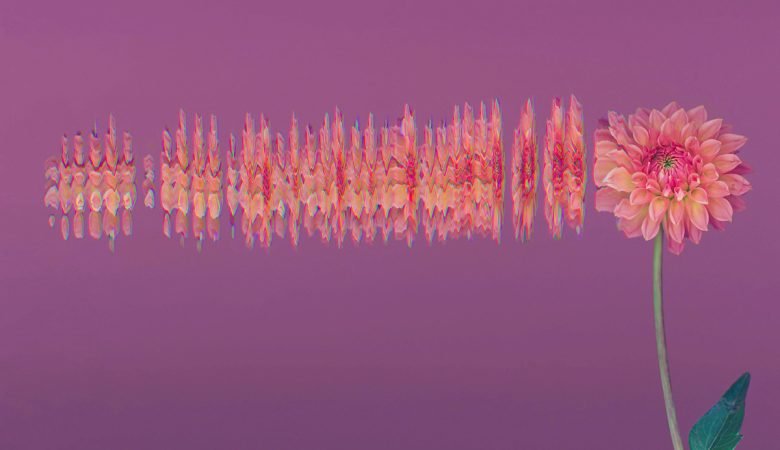
Art as Differentiator: Influencing Consumer Choices
Aesthetics play a powerful role in how we interact with our environment while influencing the decisions that we make. And no matter what your business, be it a buzzworthy new high-end property or a family-run grocery store, art is a powerful tool that can create a critical emotional connection that makes your space memorable and worth revisiting.
Humans are aesthetically driven creatures, and art has a profound effect on the brain. With different brain regions being activated by the perception of beauty, it should come as no surprise that creating a unique and beautiful customer experience is a top priority for businesses that want to stand apart. Consider the importance of fostering an emotional connection – one that makes the customer feel things like comfort, familiarity, luxury, or community. Great art has the power to transform mere services and goods into a unique and covetable experience, and people prioritize those positive experiences when it comes to the places they frequent – and where they spend their money.
Art inherently acts as advertising by shaping the perception and importance of different products and brands in our individual lives. And when business owners effectively carve out their niche with thoughtful curations and creative branding, they can influence consumer decision-making and create a strong business with a foundation in customer loyalty.
Using Art To Enhance Your Brand
Take a moment to think of some of your favorite companies. What makes you gravitate towards them? Perhaps they feel modern and trendy, or maybe they’re a heritage brand that represents quality and durability. No matter what your perception, these characteristics weren’t established overnight – a brand’s reputation and image takes thoughtful consideration. But investing in art for your branding, and doing so in a thoughtful and clever way, can more than differentiate your business – it can even make you a powerhouse!
Let’s look at some of these brilliant examples from internationally recognizable brands. IKEA, originally founded in 1943, has long maintained a reputation for affordable yet attractive goods. However, perhaps because of a surplus of factories and overseas manufacturing, they’re not the only name in the game. Despite their longevity, there was a need to level up to make their goods and brand more desirable. Enter their artist collaborations, a series of limited edition products that are produced in collaboration with internationally respected artists and designers.
This move was nothing short of genius. Consumers are incredibly responsive to unique goods and scarcity (we want what others can’t have), and introducing limited edition collaborations ensures that exciting new products are created season after season, giving IKEA regular opportunities to reinforce and build upon its reputation. And if, worst-case scenario, a particular collection turns out to be a flop; they can always start fresh in a few months – and with a clearer understanding of what works and what doesn’t.
What’s more, thoughtful selections of top artists give these collections credibility and worth, and regular rollouts mean that IKEA is able to build hype while managing customer expectations. Better yet? It gives the brand an opportunity to reach new audiences by creating the same old trusted products – just with a welcome facelift, making them appealing to both their base and a new target audience.
Let’s also take a look at Smirnoff and their 2017 “We’re Open” campaign, which invited transgender and non-binary artists to shine a spotlight on nightlife culture and inclusivity. Working with creatives to produce authentic and progressive imagery cemented their position as a top lifestyle brand, all while establishing a positive and socially conscious message. The result? The company is now respected for its commitment to progressive values and connection to the LGBTQ+ community, making them a regular go-to for those that want to imbibe responsibly – and consciously.
Using Art In Product Design
Art is intentional – it’s emotional, it’s provocative. And increasingly, the way a product looks is becoming more and more important. Consumers have evolved far beyond usability and functionality. They now also desire something that looks good, and top companies understand that putting product design first is the stepping stone to creating desirability.
While the brand is obviously having a moment, we’d be remiss to ignore the decades-long phenomenon of the Barbie doll. The original toy felt nearly subversive: the concept of an adult doll for children seemed an impossible sell to many marketers. However, Barbie’s creator, Ruth Handler, had tapped into something, and the doll quickly became an international sensation.
Despite the recent Barbie movie’s obvious impact on bringing our long-time companion back into the spotlight, she’s rarely been unpopular. And this is, in part, due to Mattel’s incredible attention to consumer needs and desires. After identifying a need for diversification, Barbie started to shapeshift, inhabiting different body types and representing different cultures and races. This bold step clearly worked when a black Barbie sporting a short afro became the top-selling Barbie in 2019. In fact, this representation allowed Mattel to sell 86 million dolls in 2021 alone, or about 164 dolls every minute.
Let’s also return to the incredible influence of the Barbie movie and its unparalleled art-based marketing strategy. Once, Barbie allowed us to live out different lifestyles and fantasies – you could be Barbie the beauty queen, Barbie the astronaut, or both. But now, major theaters feature a lifesize replica of the instantly recognizable Barbie box, giving customers an opportunity actually to become the dolls themselves. This branding is powerful and we see it everywhere – in fact, we challenge you to spend a few minutes on social media without seeing a connection post a picture of their night at the movies, clad in pink and doing their best Barbie impression.
Regardless of whether or not we can put our finger on it, most of us intrinsically understand that art has a profound impact on brands and product design. But by taking a deeper look at what makes your business unique and what customers need, you can make smarter decisions when it comes to working with artists and designers.
Look to the needs of your base and think about whom you’d like to invite to the party – how can you elevate your visual identity to welcome both? And how can you keep them excited and eager to come back? Great art encourages great relationships – don’t shy from leveraging it to propel your brand.




